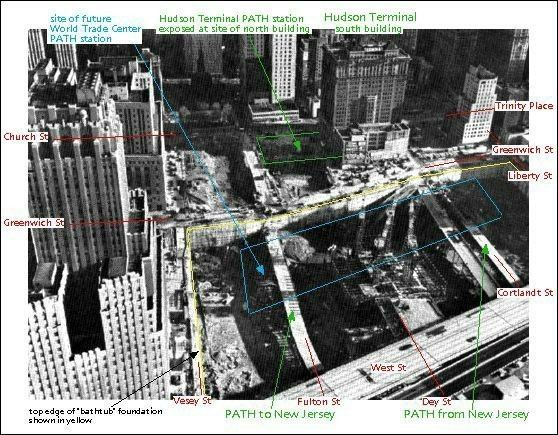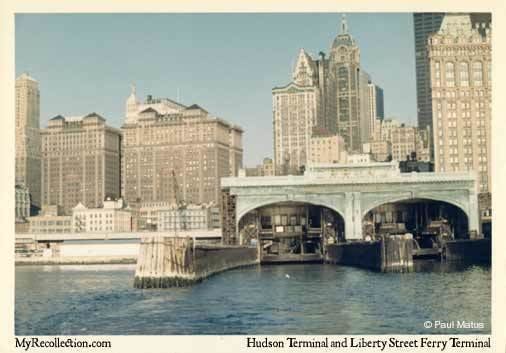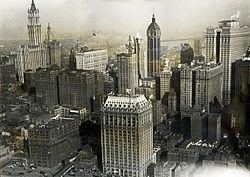Opened 19 July 1909 | ||
 | ||
Similar Hudson and Manhatta, City Investing Building, Singer Building, Manhattan Transfer, Exchange Place station | ||
Hudson terminal
Hudson Terminal was an urban railway station on the Hudson and Manhattan Railroad in Lower Manhattan, New York City and the office skyscraper built to serve the terminal. It operated from 1909 to 1971, and the building was mostly demolished by 1972.
Contents

Tcmrr hudson terminal
Station

The station was served by two single-track tubes connected by a loop to speed train movements. The loop included five tracks and 3 platforms (2 center island and one side) and was similar to the arrangement of the current World Trade Center PATH station. By 1914, passenger volume at the Hudson Terminal had reached 30,535,500 annually. Volume nearly doubled by 1922, with 59,221,354 passengers that year.

The Beaux-Arts terminal opened with its first train service on July 19, 1909, marking the first use of the Downtown Hudson Tubes, and closed in 1971, when the World Trade Center-Port Authority Trans Hudson railroad station opened. The station was located at 30 Church Street, east of the current PATH terminal. The building was mostly demolished by 1972. Some portions of the track level became part of the PATH station. The last remnant of the station, a cast-iron tube in the slurry wall of the site's foundation, was demolished in 2008.
Building

The Hudson Terminal building was an architectural and engineering marvel of its time. In size, location, function and configuration, it was the predecessor to the World Trade Center.
The terminal included two 22-story buildings located above the station, at 30 and 50 Church Street, between Greenwich, Cortlandt, Church, and Fulton Streets. This combined rail terminal and office block was the first of its kind in any city. The two buildings were identically designed, apart from the southern building's larger footprint and floor plan. Both had rooftop gardens. Dey Street ran between the two (the city wouldn't allow it to be closed), and they were connected by a third-story bridge.
Underneath Dey Street and connecting the two structures lay three subterranean stories: a concourse with access to ticket offices, waiting rooms, and commuter retail; the second underground level for five train tracks and elevated platforms; the lowest level for baggage and an electrical substation. The concourse was carefully planned and designed with a system of ramps descending from the street level to the mezzanine, to allow an unprecedented volume of pedestrian traffic to flow in and out of the station quickly and easily. According to Sarah Bradford Landau, "At full capacity the Hudson Terminal could accommodate 687,000 people per day; in comparison, Pennsylvania Station (1902–1910) was designed with a capacity of 500,000."
The architect was James Hollis Wells of Clinton and Russell, and the construction contractor was George A. Fuller.
With a total rentable floor space of 877,900 square feet (81,560 m2), some of which was taken by the railroad, Hudson Terminal was billed as the largest office building in the world by floor area. The previous record holder was the Ellicott Square Building in Buffalo, New York, opened in May 1896 with 447,000 rentable square feet; the record held only until 1913, with the first occupation of the Manhattan Municipal Building, with just under one million square feet of space.
The two Hudson Terminal buildings were acquired in the 1960s by the Port Authority of New York and New Jersey and demolished as part of the development of the World Trade Center.
